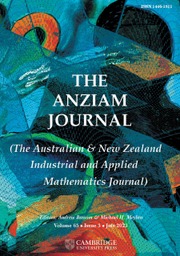Crossref Citations
This article has been cited by the following publications. This list is generated based on data provided by Crossref.
Jarvis, Peter D.
and
Sumner, Jeremy G.
2016.
Matrix group structure and Markov invariants in the strand symmetric phylogenetic substitution model.
Journal of Mathematical Biology,
Vol. 73,
Issue. 2,
p.
259.
Sumner, Jeremy G.
Taylor, Amelia
Holland, Barbara R.
and
Jarvis, Peter D.
2017.
Developing a statistically powerful measure for quartet tree inference using phylogenetic identities and Markov invariants.
Journal of Mathematical Biology,
Vol. 75,
Issue. 6-7,
p.
1619.
Sumner, Jeremy G.
2017.
Dimensional Reduction for the General Markov Model on Phylogenetic Trees.
Bulletin of Mathematical Biology,
Vol. 79,
Issue. 3,
p.
619.
Jarvis, Peter D
and
Sumner, Jeremy G
2019.
Systematics and symmetry in molecular phylogenetic modelling: perspectives from physics.
Journal of Physics A: Mathematical and Theoretical,
Vol. 52,
Issue. 45,
p.
453001.
Jarvis, Peter D
2019.
Systematics and symmetry in molecular phylogenetic modelling.
Journal of Physics: Conference Series,
Vol. 1194,
Issue. ,
p.
012056.

